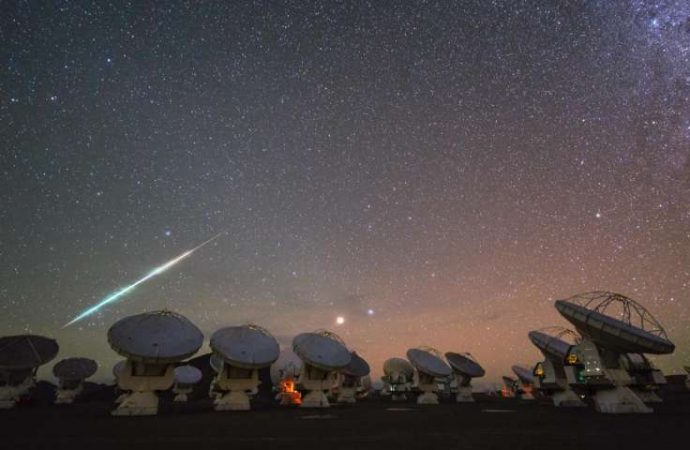A team of researchers working at Sandia National Laboratories in New Mexico has found an explanation for the variety of sounds people hear when witnessing a falling meteor—sounds that should not be heard until minutes later due to the long distances involved.
In their paper published in Scientific Reports, the team describes experiments they conducted with transducer materials and what they learned by doing so.
Over the years, witnesses of falling meteors have reported hearing a wide variety of noises that appear to come from the rapidly descending fireball. While it is not surprising that meteors would emit noise as they streak through the Earth’s atmosphere, it is surprising that they would be heard during the meteor’s descent because of the distance. Meteors are generally first noticed as they begin burning many miles high in the atmosphere—and most land equally far away from witnesses. So, how could people hear emitted sounds as they are being made? That was what the team at Sandia Labs sought to answer.
The team began with a theory that the noise was not actually generated by the meteor itself, but by nearby objects. They believed the bright light generated by the fireball comes in pulses and that those pulses cause a rapid rise in the temperature of the air through which they travel. The nearly instant air pressure change would result in pressure waves, which would be converted into acoustic waves when they crashed into what the team described as dielectric transducers—heat absorbing objects such as leaves, hair or even a shirt someone was wearing.
To test their theory, the researchers studied photographs and video of meteors and plotted the intensity of the light generated. Then they calculated the likely acoustic waves that would result if they struck various objects. Next, they fired similar light pulses at materials to see if noises similar to those reported by meteor witnesses could be heard. They report that such sounds were, indeed, generated, suggesting that their theory was correct—the first to attempt to explain meteor noise due to light. They have called it a “photoacoustic hypothesis.”
Source: Phys.org

































Leave a Comment
You must be logged in to post a comment.